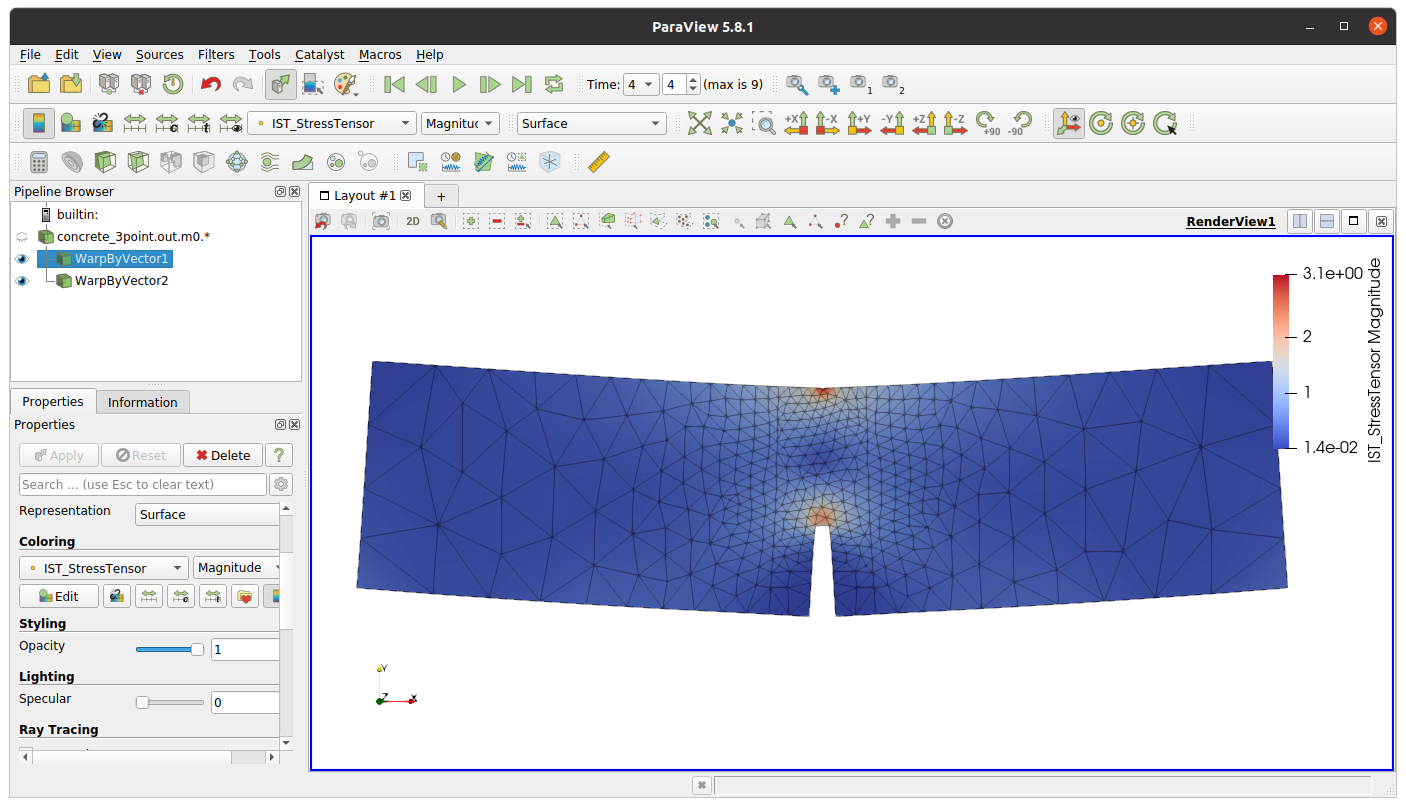Postprocessing¶
By default, oofem produces output in the form of readable text file, called output file. At the same time, oofem can produce output in other formats, that are more suitable for postprocessing in third-party tools. This is done by configuring one or more export modules in the input file. In this short tutorial, we will cover vtk postprocessing.
Configuring vtk export¶
VTK is a widely used format for storing simulation results. The vtk files can be opened in many visualization tools.
The export of results in vtk format can be done using vtkxml export module.
The number of export modules is defined in analysis record using nmodules keyword. The records for export modules should immediately follow analysis record.
The detailed syntax of vtkxml record is described in oofem input manual.
As an example, consider an example of 3-point bending test input file (located in tests/benchmark/sm/concrete_3point.in) which we modify to add vtk export:
concrete_3point.out
Test: 3-point bending, triangular elements, 1 loaded point
StaticStructural nsteps 4 solverType "calm" stepLength 0.025 rtolf 1e-4 Psi 0.0 MaxIter 200 reqIterations 80 HPC 2 1 2 stiffmode 1 nmodules 1
vtkxml tstep_all dofman_all element_all primvars 1 1 vars 2 1 4
...
The export has been requested for all solution steps tstep_all, all dof managers (nodes) dofman_all and all elements element_all. The primary variables exported consists of displacement vector: primvars 1 1, where primvars is the keyword for primary variable export, what follows is an array of primary variables IDs (defined in src/core/unknowntype.h), first number determines the array size.
The export of secondary (internal) variables consists of strain and stress tensors (vars 2 1 4, where internal variable codes are defined in src/core/internalstatetype.h).
After running the modified, extended input the solver will produce for each solution step vtu file.
Postprocessing in paraview¶
In this example, we will use Paraview (Open-source, multi-platform data analysis and visualization application, www.paraview.org). After installation of this tool, simply launch paraview and open one or all vtu files produced.
